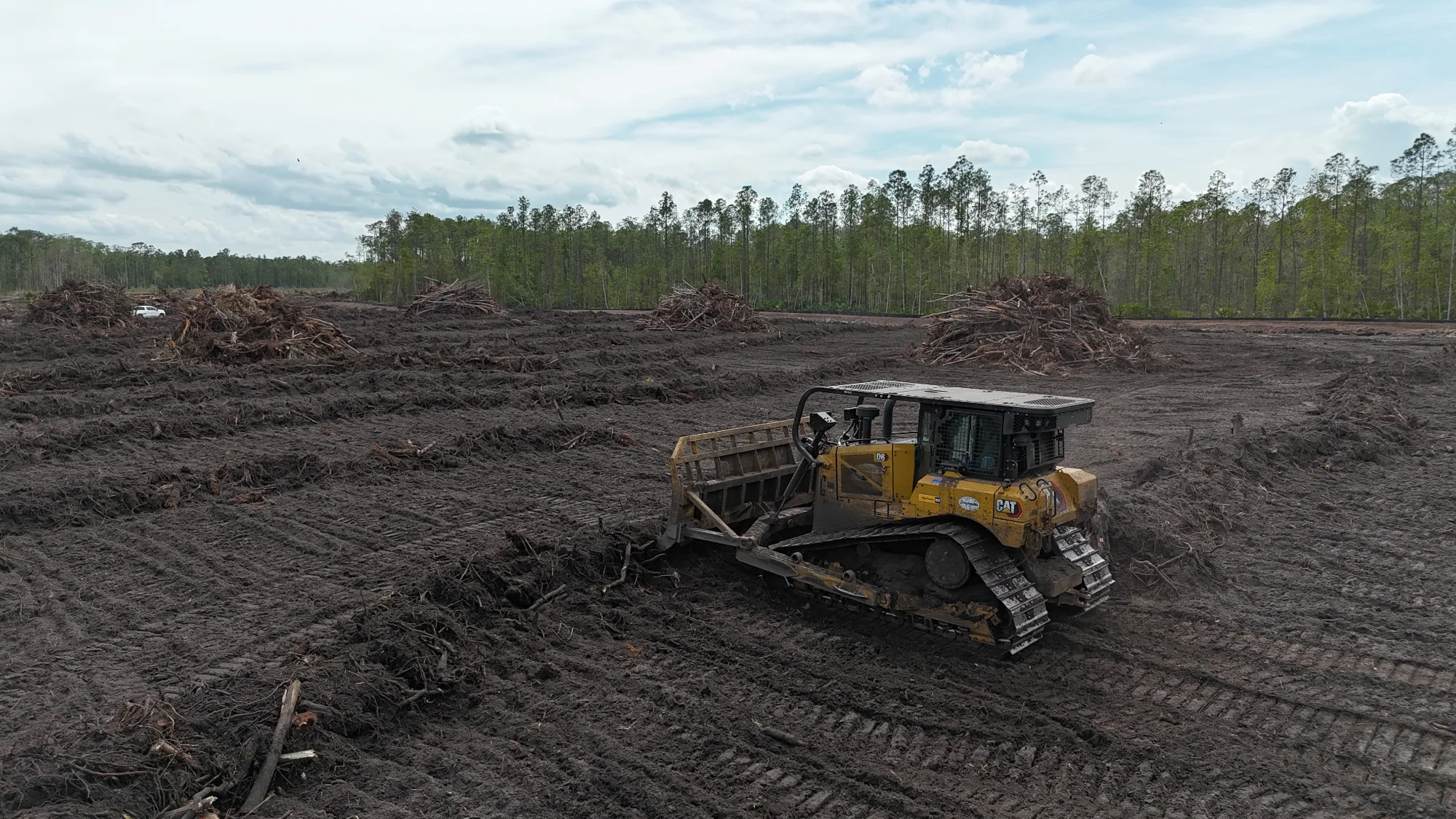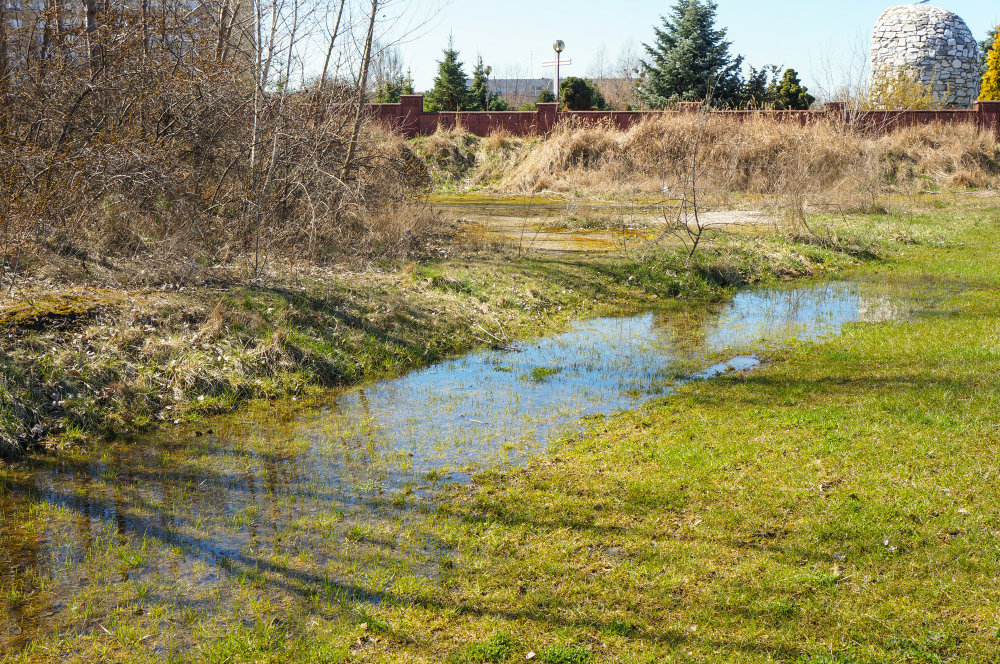

Creating a beautiful lake or pond on your property can transform your landscape and provide countless benefits. However, successful water feature construction begins with proper land clearing. Understanding the process, requirements, and best practices will help ensure your project meets both aesthetic and functional goals.
Land clearing for lakes and ponds involves much more than simply removing trees and vegetation. It requires careful planning, environmental consideration, and specialized techniques to create a sustainable aquatic environment that enhances your property value and provides years of enjoyment.
Land clearing for lakes and ponds differs significantly from standard construction site preparation. The process must account for water flow patterns, soil composition, and environmental impact while creating optimal conditions for aquatic life and water retention.
Several factors influence the land clearing approach for your water feature project:
Soil Assessment: Understanding your soil type determines excavation methods and potential water retention issues. Clay soils typically hold water well, while sandy soils may require additional sealing measures.
Drainage Patterns: Existing water flow must be evaluated to prevent flooding or erosion issues. Proper drainage integration ensures your pond maintains appropriate water levels year-round.
Environmental Regulations: Many areas require permits for pond construction, especially if it affects local waterways or wetlands. Research local requirements before beginning any clearing work.
Size and Depth Requirements: Larger ponds require more extensive clearing and may need specialized equipment for efficient completion.
Professional land clearing begins with comprehensive site assessment. Experts evaluate terrain, vegetation density, soil conditions, and existing infrastructure to develop an effective clearing strategy.
Topographical surveys help determine optimal pond placement and identify potential challenges. This information guides equipment selection and timeline development for your project.
Tree and shrub removal requires careful planning to preserve desirable vegetation while clearing areas designated for water features. Selective clearing maintains natural windbreaks and aesthetic appeal around your pond perimeter.
Stump grinding ensures complete root system removal, preventing future water quality issues and structural problems. Professional crews use specialized equipment to minimize soil disturbance during this process.
Proper soil preparation creates the foundation for successful pond construction. This involves removing organic matter that could decompose and affect water quality, while preserving soil structure needed for stable banks.
Grading establishes proper slopes for both safety and functionality. Gentle slopes prevent erosion while steep areas may require reinforcement or terracing.
Large-scale land clearing projects typically require multiple pieces of specialized equipment:
Excavators: Essential for precise digging and material handling around water features. Different attachment options allow for various clearing tasks.
Bulldozers: Effective for pushing large amounts of vegetation and debris, especially in heavily wooded areas.
Mulchers: Convert cleared vegetation into usable mulch, reducing waste and providing materials for landscaping around your completed pond.
Professional land clearing prioritizes safety throughout the process. Proper equipment operation, utility line identification, and environmental protection measures ensure project completion without accidents or damage.
Underground utility marking prevents costly and dangerous encounters with electrical, gas, or water lines. Professional crews coordinate with utility companies before beginning work.
Responsible land clearing minimizes environmental disruption while creating beneficial aquatic habitats. Proper planning preserves existing wildlife corridors and maintains natural water filtration systems.
Buffer zones around your pond area protect nearby vegetation and provide wildlife habitat. These areas also help prevent erosion and filter runoff before it reaches your water feature.
Effective erosion control measures protect both your property and surrounding areas during and after clearing. Temporary measures like silt fences contain sediment, while permanent solutions include appropriate ground cover and stabilization techniques.
Proper timing of clearing activities reduces erosion risk. Avoiding wet seasons and coordinating with weather patterns helps maintain soil stability throughout the process.
Florida's unique climate presents specific challenges and opportunities for pond construction. High humidity, intense rainfall, and hurricane potential require robust clearing and construction approaches.
Seasonal timing affects project success. Dry seasons provide optimal conditions for land clearing, while wet periods can complicate access and soil management.
Florida environmental regulations vary by region and may include specific requirements for pond construction near sensitive areas. Wetland protections, water management district rules, and local zoning ordinances all influence clearing approaches.
Permit requirements often include environmental impact assessments and construction specifications. Professional land clearing companies understand these requirements and can guide you through the approval process.
Florida's diverse ecosystem includes numerous protected species that may influence clearing timelines and methods. Proper planning accounts for nesting seasons, habitat requirements, and relocation needs when necessary.
Native plant preservation around pond areas provides natural filtration and habitat while reducing maintenance requirements. Professional crews identify valuable native species for protection during clearing operations.
Several factors influence land clearing costs for pond construction:
Property Size: Larger areas require more time and equipment, increasing overall costs.
Vegetation Density: Heavily wooded areas need more extensive clearing than open grassland.
Soil Conditions: Rocky or clay soils may require specialized equipment and techniques.
Access Requirements: Remote locations or difficult terrain can increase equipment transportation costs.
Proper planning ensures efficient project completion while maintaining quality standards. Weather conditions, permit approval times, and equipment availability all influence scheduling.
Coordination with other contractors involved in pond construction helps minimize delays and reduces overall project costs. Professional land clearing companies work with excavation and landscaping teams to ensure smooth project progression.
Creating the perfect lake or pond requires expertise in both land clearing and environmental stewardship. Professional services ensure your project meets all regulatory requirements while achieving your aesthetic and functional goals.
Quality land clearing establishes the foundation for a beautiful, sustainable water feature that enhances your property for years to come. Proper planning, environmental consideration, and skilled execution make the difference between a successful project and costly problems.
If you need professional land clearing in Orlando, FL, contact Drinkwater & Drinkwater today to get a quote. Our experienced team understands Florida's unique requirements and can help bring your lake or pond vision to life.